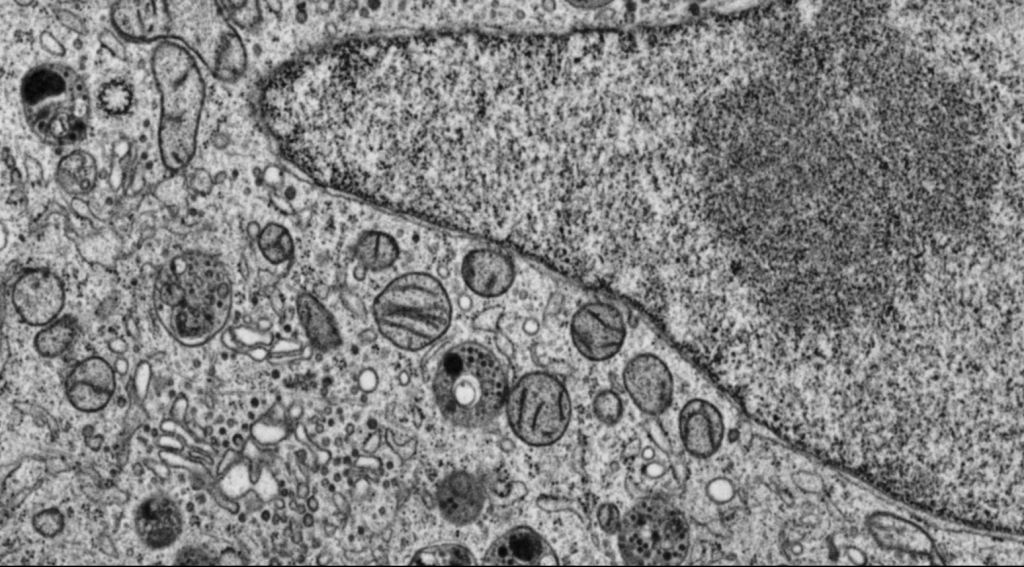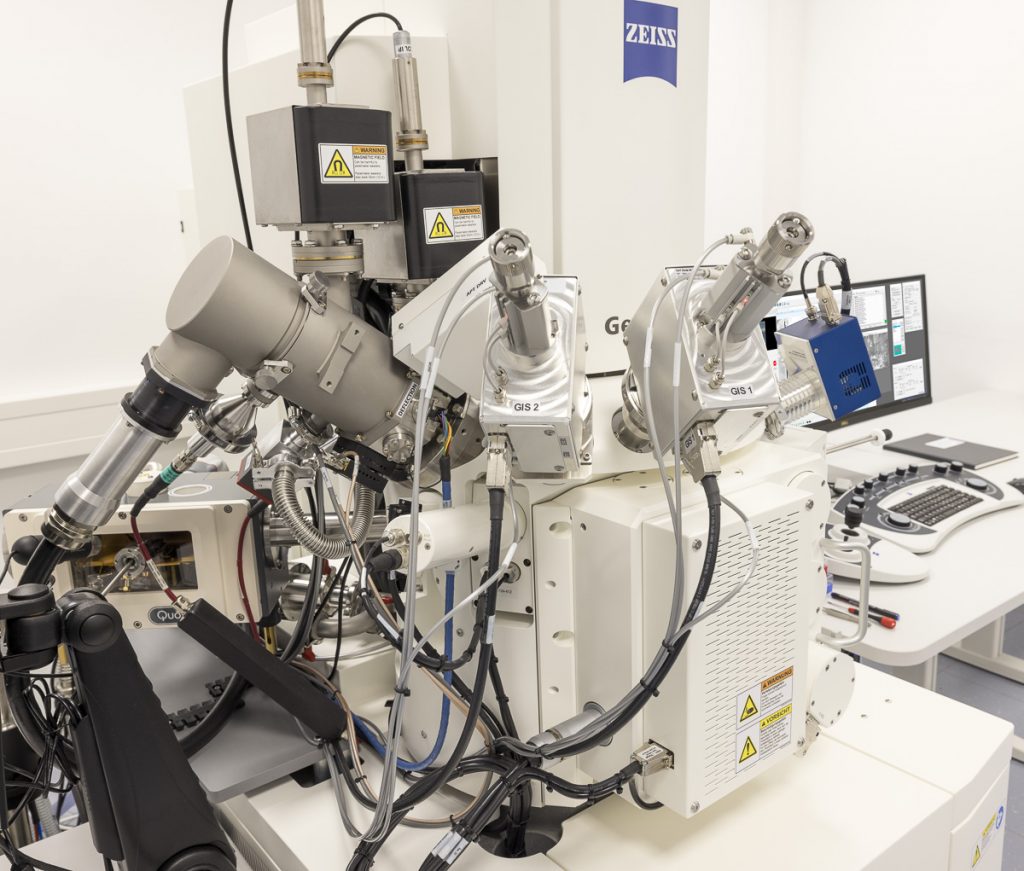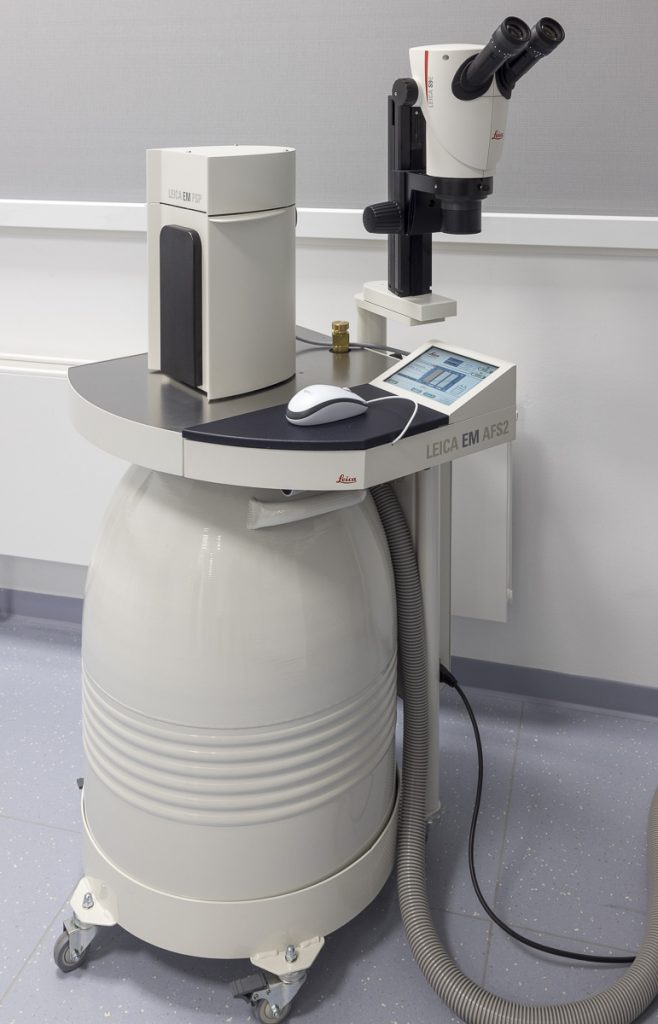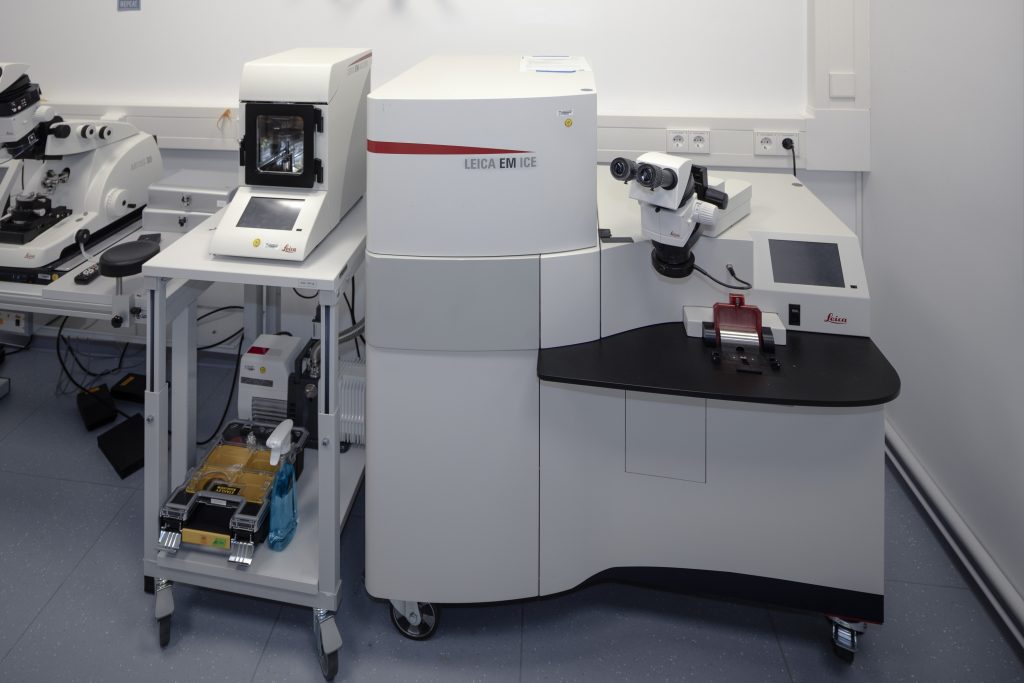Crossbeam 550
The Crossbeam 550 (focused ion beam-scanning electron microscope) from ZEISS allows data acquisition in 3 dimensions at isotropic nanometer voxel size. Samples from cells to tissues and organisms can be looked at with electron microscopic detail. Chemically fixed, high-pressure frozen and freeze-substituted as well as purely frozen samples can be analyzed. On top of data production, the Crossbeam550 is also equipped to generate cryo-lamellae to be analysed further in a transmission electron microscope e.g. using tomography.
Features
- Isotropic volume acquisition down to a few nm
- Large 3D volume acquisition
- Cryo lamella preparation
Specifications
- Detectors: InLens, EsB and Se
- Quorum Cryo-SEM preparation system
- ZEISS Atlas 5 software


EM AFS2
The EM AFS2 from Leica Microsystems performs freeze substitution and progressive lowering of the temperature (PLT) techniques and allows low temperature embedding and polymerisation of resins.
Features
- Automatic dilution of reagents from stock containers
- Fast UV polymerisation with LED UV lamp for one-step preparation
- Adjustable transfer function of gaseous LN2 to minimise contamination of the specimen
Specifications
- EM FSP (freeze substitution processor), its automatic reagent handling system

EM ICE
The EM ICE from Leica Microsystems is a modular high-pressure freezing system that can be expanded to enable optical and light stimulation as well as a full live cell CLEM workflow. The freezing principle of the EM-ICE only uses LN2 as cooling liquid, thus preventing alcohol residue in the chamber, on the carrier or the specimens.
Features
- Alcohol-free freezing principle
- Live Cell CLEM workflow support
- Automatic draining of the LN2 Dewar
Specifications
- Electrical and light stimulation module
